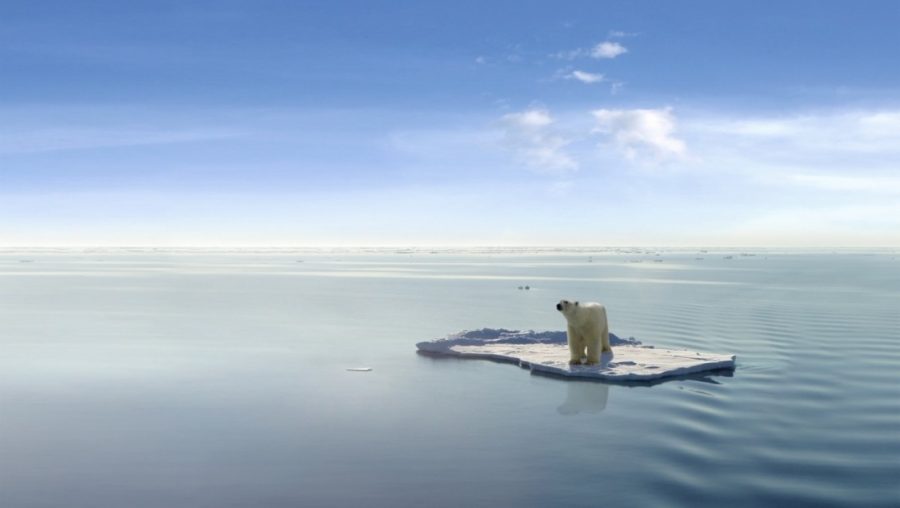Global Warming and the Ocean
October 16, 2020
Global warming is a term no one is unfamiliar with in the society we live in today. It’s a term thrown around very often in science classes and occasionally in politics, but what exactly is global warming and how is it impacting the world around us? The impacts of global warming are becoming more and more visible every day and starting to impact many different ecosystems and regions of the world, ocean life especially. Many ask the questions ‘Why should we care about this?” or “How does this affect me?” when discussing climate change, and while many of the impacts are just beginning, in these past few and upcoming few years we are seeing firsthand why we should care and how this will affect us. There are dozens of different ways our acceleration of climate change will impact us, ranging from more intense tropical storms, rising sea levels, billions of tons of ice melting or cracking off every year, ocean acidification, the list goes on [NASA], but the focus of this article is going to be on the oceanic and arctic impacts and why those impacts are important.
Before we can discuss how it is currently affecting the world, we need to understand what exactly global warming is. Global warming, while temperature rate fluctuation is a result, doesn’t always necessarily refer to the physical temperature at any given moment. A better phrase for global warming is climate change, which discusses the overall change in worldwide climate, damage done to the ozone layer (which filters out harmful UV rays and radiation from Earth’s atmosphere), and the greenhouse gasses (gases like carbon dioxide, produced by burning coal and other fossil fuels, and methane, that is produced by factories and fracking) trapped in our atmosphere. All of these different factors contribute to the unnatural drastic rising or decreasing temperatures we all refer to as global warming. While some climate change is entirely natural and normal (we’ve observed evidence of many past ice ages and mass scale climate adjustments), according to NASA the past six years have been the hottest years ever recorded and ocean temperatures are rising at rates nearly 10 times faster than they did coming out of the last ice age. The most alarming statistic from NASA was that our atmosphere’s carbon dioxide levels are the highest they’ve been in 650,000 years. While the facts alone are frightening, there are tons of easy everyday changes we can make to help in reducing our personal carbon footprint, like starting a household herb or vegetable garden, reusing plastic and glass and recycling what you can’t reuse, using a refillable water bottle instead of plastic bottles, using reusable tupperware or beeswax wraps instead of plastic wrap, etc.
Climate change doesn’t just revolve around the air though, and, in fact, the ocean absorbs nearly 90% of the excess heat trapped on the surface of the Earth [NY Times]. As temperatures increase we’re beginning to see ocean levels rising, this rise is caused by both the expansion of the ocean (particles expand to take up more space when heated) and the melting of our polar ice caps. When we think of global warming affecting the arctic we usually think of polar bears, seals, and penguins losing their home, and while that is an entirely real threat, its impacts on the ocean could be even more severe. Melting ice means increases in ocean levels, and as 10% of the world’s population lives below 30 feet above sea level, that can pose a serious threat to our coastal cities [Conservation.org]. This issue is rapidly accelerating as time goes on, just over two months ago the world’s last intact arctic ice shelf broke and lost 40% of its area in just two days [NBC]. Many different species are being impacted by the sea level increase and the rise in sea temperature and salinity, and while some species can just migrate to a different part of the ocean, many are stuck in regions like coastal shelves or arctic seas where they have nowhere else to go. Algae and krill rely on the presence of sea ice, and with sea ice rapidly melting, algae and krill populations (and the populations of whales and other species that rely on them for food) will follow too [Conservation.org]. Many fish are also changing migratory patterns and moving to completely different parts of the world which is not only disturbing natural ecosystems worldwide, but it’s causing massive issues for fishermen and islanders who rely on these fish as a source of food [Panda.org]. Many coastal areas and reefs are dying off as a result of ocean pollution in tandem with the rising water temperatures, and without any intervention or help many famous coastal beaches and reefs could soon end up an aquatic desert.
Climate change is and will forever be an ongoing issue, and while some may argue or deny its presence, we are beginning to see the results of this very prominent issue firsthand. Climate change isn’t just an issue of fish changing what direction they swim in or an especially hot summer, we’re seeing mass-scale endangerment for many species, species displacement, records for highest recorded temperatures worldwide, changing of currents and jet streams, polar ice cap melting, severe hurricanes and tropical storms, and so many other examples of just how critical and dangerous this issue is becoming. While much of global warming is out of our hands in our everyday lives, we can all make efforts to help preserve our world and promote a healthy environment. We only get one Earth so we need to take care of it while we still can, and by just being a little more conscious of your carbon footprint and opportunities for sustainability you can help lead us in the right direction.

